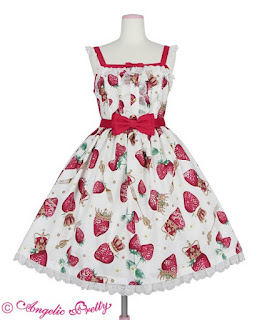This Bibliotheca theme of royalty has dwelled in my mind since it was decided. Royalty and accompanying imagery (like crowns and orbs) have a strong place in lolita fashion, which apparently goes against the rebellious tendencies of the fashion. But there's much more to the place of royal motifs in lolita (punk lolita especially) than there might initially appear.
First and foremost, I need to assert something: I am an American lolita, whether I like it or not. I grew up going to the Smithsonian regularly, I used to work at George Washington's house, and I freaking love peanut butter and jelly sandwiches. As some of you may know, the United States was formed for the dual purposes of tax evasion and not wanting to care about the monarchy, and we have since done a lot of anti-monarchy stuff, including wars. Because of this, I consider it my inborn natural right not to give a single shit about Charles and his creepy Vienna sausage fingers, and I'm not even going to bother looking at the coronation. Y'all's food isn't even edible.
Crowns, orbs, and royalty really entered casual fashions thanks to the estimable Vivienne Westwood (may her memory be a blessing). Even today, the VW site is littered with orbs, crowns, tartan, and flags. I've even met many fashion fans who are far more familiar with the royal orb as a VW design and not a historical artifact.
 |
| Pearl Drop Earrings for $315 |
 |
| The image for the Sex Pistols' "God Save The Queen" is totally anti-authoritarian |
I don't know what exactly happened when punk made it to Japan, but I do know that, though the symbols stayed with the style, they lose their meaning out of context. The crushing authority of crowns and flags only holds meaning when you've seen them used sincerely. Without that direct connection to the politics of these symbols, a flag is just a rectangle and a crown is just a cool punk design.
 |
| Putumayo's Crown Embroidery Pullover using crowns in 2013 in a punk yet decontextualized manner |
In a lot of punk lolita, I see the remnants of the anarchist spirit in using crowns, tartans, and other symbols of traditional British monarchy. Even though they may not be directly meaningful and applicable, they still carry an undercurrent of rebellion. People may not know why these symbols mean punk rebellion, just that they do mean it. But lolita and adjacent fashions often decontextualize the royal imagery even further.
Jane Marple is a brand that epitomizes the removal of meaning from the crown symbol over time. Early Jane Marple designs mimicked or outright copied Vivienne Westwood designs like the iconic heart lapel jacket, incidentally preserving the rebellious spirit of the symbols used through close replication. Lots of Jane Marple designs from the 1990s hold this slight edge. But by 1997, they've started to release pieces like the Original Crown Jacquard dress, which uses crowns in an elegant, uncritical way.
 |
| Jane Marple's Original Crown Jacquard |
After 2000, purely anti-authoritarian use of royal motifs in lolita seemed to disappear outside of punk lolita. The constant use of crowns and tartans by brands like Innocent World hold nostalgia rather than criticism. Classic-leaning brands like IW draw heavily on historical inspiration and a generally high-class image without much fantasy, so the royal aesthetic is clearly used to evoke elegance, not contempt. The Elizabeth dresses from AATP also showcase this historic realism with specificity down to a specific (tragic) empress.
 |
| IW's Crown and Fleur-de-Lis JSK from 2003 |
Sweet brands use crowns to evoke fairy-tale monarchies and the fantastical ideal of princessiness that the earlier Barbie movies and Disney Princesses sell to young girls. There is no authority in the fictional fairy-tale princess, just the freedom of being in a far-away place where work is unnecessary, dresses are frilly, and relationships are sealed with True Love's Kiss and not tax paperwork. The 2017 Brilliant Princess Story OP by Angelic Pretty epitomizes this storybook portrayal of royalty.
 |
| AP's Brilliant Princess Story OP |
The third and final category, which is the most common and my favorite, is when brands slap a crown down because they need a motif and crowns look nice. Angelic Pretty's Royal Crown Berry (2020) is a favorite of mine. Those fruits don't understand monarchy or history or fairy tales or authoritarianism: they're literally just fancy strawberries playing dress-up.
 |
| AP's Royal Crown Berry. Look at 'em go! |
 |
| BPN's Crown Ribbon Motif Tulle Skirt, a meaningless gothic crown |
So those are the the facts of the matter. Now it's time for me to explore my opinions.
I honestly like crowns in lolita when they're not in a weird British-obsessed style. A lot of times, the crown is a pretty generic, whimsical motif that just goes in everything. Plus, the other common filler motif, crosses, is definitely not my style. For all the harm that British imperialism and monarchies in general have done, the continuing chokehold that the Christian right exerts over politics is infinitely more distasteful to me. As a Jew who has been preached at all my life, I never want to imply personal connection to or with Christianity. Crosses are an immediate no.
Symbolically, though, I think it's hilarious for someone as blatantly anti-authoritarian as I am to wear symbols of an authority that will never apply to me. Unlike the cross, which might be confused for neutrality or even sincerity, nobody thinks that my ridiculous little pleather mini-crown means I think inbred inflatable-handed ghouls should hold absolute power. And so, even though royalty is against the fiber of my being, I treat the crown motifs with casual disdain because there's no risk of them being confused for real. I like crowns because I can make them meaningless and that's worth a laugh.

No comments:
Post a Comment